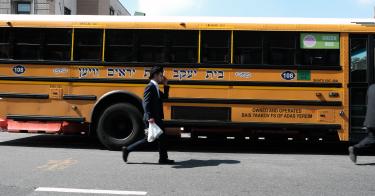The perspective of yeshiva parents like Sheva Tauby (“The Campaign Against Our Yeshivas,” Houses of Worship, Sept. 16) was sorely lacking in the New York Times cover story to which she replies. The Times highlighted about a dozen Hasidic primary schools that fared much worse than public schools on state exams. But the relevant comparison is to other students who come from homes where English isn’t the primary language.
Once we compare apples to apples, the yeshiva results no longer appear exceptional. On the 2019 state English Language Arts exam, there were 155 New York City public schools in which fewer than 1% of English Language Learning (ELL) students performed at grade level. In more than 95% of New York City public schools, at least two-thirds of ELL students failed to perform at grade level.
>>> The New York Times’s Botched Attack on Jewish Schools
More important: Are yeshiva graduates prepared to earn a living? The Times cited high poverty rates in Hasidic communities, but the rates are distorted by larger family sizes and a younger median age. Household income provides a more accurate picture of the ability of Hasidic Jews to find decent jobs, and on that measure they outperform the general public. More specific data is needed, but a 2021 study found a median Haredi household income of $102,000.
As Ms. Tauby notes, the yeshiva system produces communities with a high degree of social capital and low rates of crime and other social ills. The Times should investigate how it manages to do that. The public-school system might learn something.
This letter originally appeared in the Wall Street Journal




